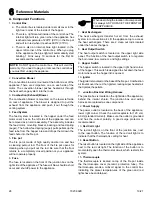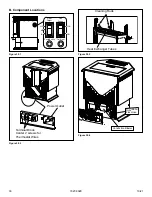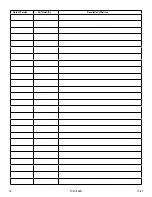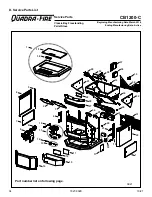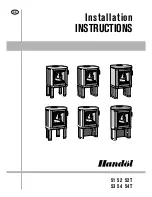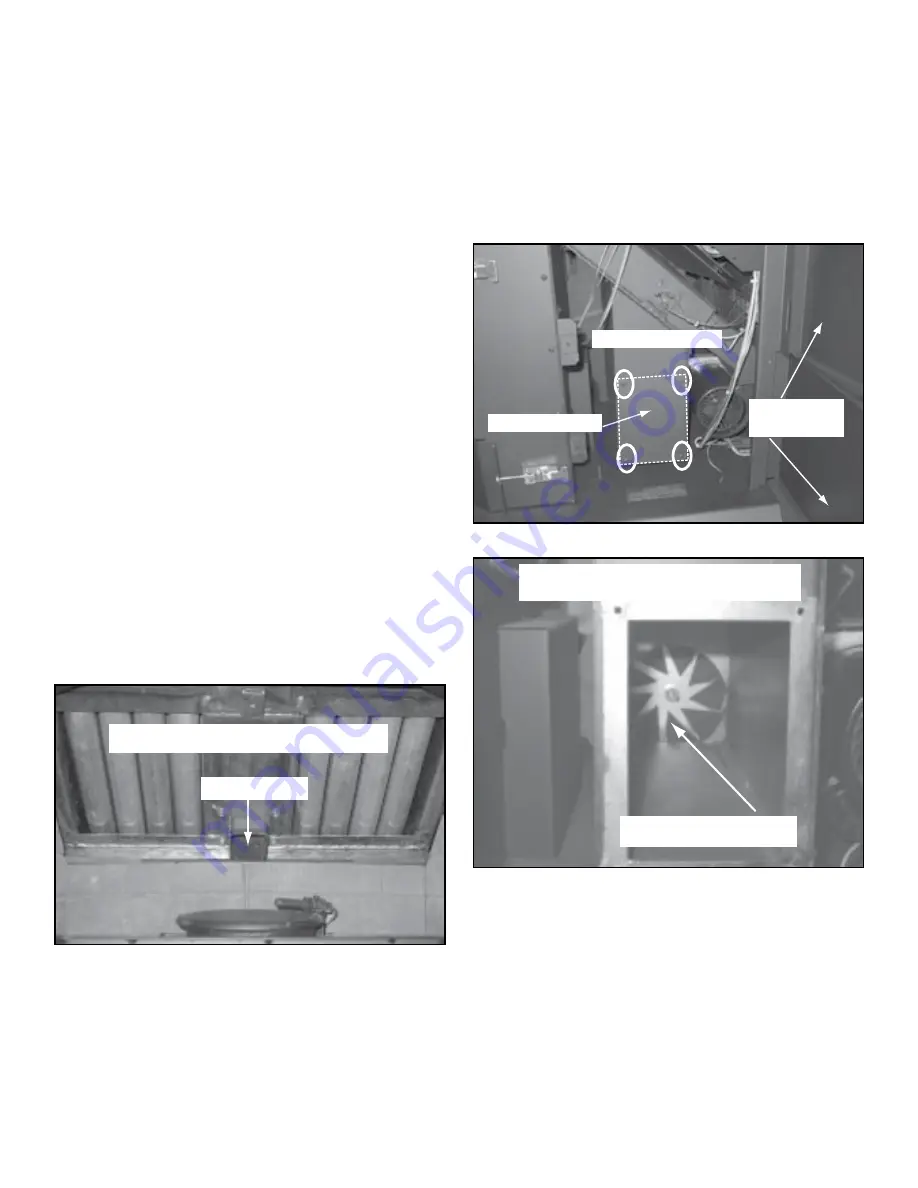
21
7027-802K
10/21
Exposed Heat Exchanger Tubes
Drop Tube
Figure 21.1
Clean-Out Plate
Remove 4 Screws
Open Right
Side Panels
Figure 21.2
Clean-Out Plate Removed
Exhaust Blower
Figure 21.3
19.
Clean Exhaust Exit Behind the Exhaust Blower
a. Open both the upper and lower right side
panels
(Figure 21.2)
.
b. Using a Phillips head screwdriver remove the 4
screws from the clean-out plate and set aside
(Figure
21.2)
.
c. Use a small vacuum hose attachment to clean
area
(Figure 21.3)
.
d. Re-attach clean-out plate and close side panels.
16.
Preparing Firebox for Non-Burn Season
• Frequency:
Yearly at the end of the heating season
• By:
Homeowner
a. Be sure the appliance is allowed to cool, has been
unplugged and the exhaust blower is off.
b. Remove all ash from the firebox and
vacuum thoroughly.
c. Paint all exposed steel, including cast-iron.
– Use the Touch-Up paint supplied with the
appliance;
or;
– Purchase paint from your local dealer.
– Must use a high-temperature paint made
specifically for heating appliances.
17.
Door Gasket Inspection
• Frequency:
Prior to heating season
• By:
Homeowner
a. Be sure the appliance is allowed to cool, has been
unplugged and the exhaust blower is off.
b. To inspect the door rope (gasket), open the door and
see that the door rope extends approximately 1/8
inch (3mm) to 3/16 inch (9.5mm) from the door rope
channel.
c. It should show signs of compaction all the way
around the door where the rope contacts the face of
the appliance. Confirm there are no air leaks.
18.
Vacuum Heat Exchanger Tubes, Firebox Area and
Drop Tube
a. Use a Shop Vac to vacuum any fly ash and soot from the
heat exchanger tubes and firebox area (
Figure 21.1)
.
b. Remove any debris that may be in the drop tube.






















